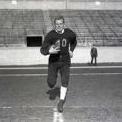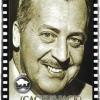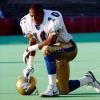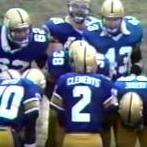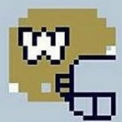-
Posts
29 -
Joined
-
Last visited
Reputation Activity
-
 Stats Junkie got a reaction from SPuDS in Matt Nichols Discredited Too Much? Passing Yards Are Meaningless
Stats Junkie got a reaction from SPuDS in Matt Nichols Discredited Too Much? Passing Yards Are Meaningless
I have been tracking drive based numbers since 2015. The key measurements (in my opinion) are points per drive and yards per drive.
Here are the numbers for the active CFL QBs who have been around since 2015
And here are the results through 3 weeks of the 2019 season
-
 Stats Junkie got a reaction from Sard in Matt Nichols Discredited Too Much? Passing Yards Are Meaningless
Stats Junkie got a reaction from Sard in Matt Nichols Discredited Too Much? Passing Yards Are Meaningless
I have been tracking drive based numbers since 2015. The key measurements (in my opinion) are points per drive and yards per drive.
Here are the numbers for the active CFL QBs who have been around since 2015
And here are the results through 3 weeks of the 2019 season
-
 Stats Junkie got a reaction from Wideleft in Matt Nichols Discredited Too Much? Passing Yards Are Meaningless
Stats Junkie got a reaction from Wideleft in Matt Nichols Discredited Too Much? Passing Yards Are Meaningless
I have been tracking drive based numbers since 2015. The key measurements (in my opinion) are points per drive and yards per drive.
Here are the numbers for the active CFL QBs who have been around since 2015
And here are the results through 3 weeks of the 2019 season
-
 Stats Junkie got a reaction from Tracker in The MBB All-time Blue Bomber Team: Centre
Stats Junkie got a reaction from Tracker in The MBB All-time Blue Bomber Team: Centre
I am a little late to the dance but I thought that I would share some information on Lou Adelman.
Adelman played the snapback/centre position for his entire career (note: he played middle wing in 1 game in 1931).
During this era, the centre was considered to be the second most important position on the field after the QB. Teams would often line up 2 or 3 players in a spread behind centre. It was up to the centre to snap the ball accurately to the correct player without tipping off the opposing team as to which player was receiving the ball.
Adelman always topped any "informal" list of all-stars during his career. For people who watched football throughout Canada, Adelman was often considered to be one of the tops in the country.
Adelman's nickname was Rosy / Rosey / Rosie. This stems from one of his first football practices when he was a kid. The centre from the previous season was a kid named Rosenthal. The Coach referred to Adelman as "Rosy" and the name stuck.
After his career, the Blue Bombers took Adelman's #1 out of circulation. It was not assigned to another player until the 1980's
Disclaimer: my vote would have been for John Bonk but Adelman would have been a close second.
-
 Stats Junkie got a reaction from Eternal optimist in The MBB All-time Blue Bomber team: Mount Rushmore and the all-time Happy Honkers
Stats Junkie got a reaction from Eternal optimist in The MBB All-time Blue Bomber team: Mount Rushmore and the all-time Happy Honkers
Long time lurker - first post
The DHB position would be incomplete without Dr. Tom "Citation" Casey.
Casey played for the Blue Bombers 1950-1955. He earned an all-star nod each season.
For 1950-1952 he was an all-star halfback. This was the end of the era when the WIFU only issued a 1st and 2nd all-star team and did not differentiate offence from defence. He was best known for his defensive play although Casey would likely have been an all-star on offence and defence in 1950 & 1952.
For 1953-1955, Casey was an all-star at defensive halfback.
Interceptions were first tracked by the WIFU in 1952. Casey finished 2nd with 7 interceptions in '52, 1st in '53 with 7 & 3rd in '54 with 6. Based on newspaper accounts, Casey had at least 10 interceptions in 1950.
-
 Stats Junkie reacted to TrueBlue4ever in The MBB All-time Blue Bomber team: Mount Rushmore and the all-time Happy Honkers
Stats Junkie reacted to TrueBlue4ever in The MBB All-time Blue Bomber team: Mount Rushmore and the all-time Happy Honkers
I will work on the bios today and have the lists out. Not sure about Serna, but I will add him, but then Hajrullahu could be added too (best all-time single season field goal percentage in club history, st least before Medlock)
-
 Stats Junkie got a reaction from TrueBlue4ever in The MBB All-time Blue Bomber Team: Coach and General Manager
Stats Junkie got a reaction from TrueBlue4ever in The MBB All-time Blue Bomber Team: Coach and General Manager
Reg Threlfall was also Coach of the 1942 & 1943 Winnipeg RCAF Bombers who lost in the Grey Cup each year. The 1942 & 1943 RCAF Bombers teams are part of the Winnipeg Blue Bombers history. The Blue Bombers suspended operations on August 24, 1944 when the team learned that RCAF members were no longer permitted to play on a civilian team.
Note: In 1942, Threlfall was Manager of the Winnipeg City League. He would visit the practices of all 3 teams (Bombers - civilians; RCAF Flyers - servicemen; Manitoba Bisons - students & civilians). Threlfall was Coach of the Winnipeg RCAF Bombers (combined team) who played in the west final and Grey Cup.
Threlfall once claimed that the 1940 Winnipeg Blue Bombers was the best team he ever coached.
The rules dispute in play in 1940 was regarding blocking down field. The WCRFU (which included the WIFU) had liberal blocking rules which permitted linemen to block downfield and backfielders to block up to the line of scrimage. The CRU (governing body of football in Canada which regulated the eastern playoffs and Grey Cup) only allowed linemen to block on the line and backfielders could only block in the backfield.
The CRU made it known prior to the 1939 Grey Cup that unified rules would have to be in place prior to the 1940 Grey Cup if the WCRFU wanted to enter a team. Negotiations continued up to November 1940 without success. As the CRU kept a date open for an East-West Grey Cup game, it was determined that the Grey Cup in 1940 would instead be a 2 game total points series.
-
 Stats Junkie got a reaction from Fatty Liver in The MBB All-time Blue Bomber Team: Coach and General Manager
Stats Junkie got a reaction from Fatty Liver in The MBB All-time Blue Bomber Team: Coach and General Manager
Reg Threlfall was also Coach of the 1942 & 1943 Winnipeg RCAF Bombers who lost in the Grey Cup each year. The 1942 & 1943 RCAF Bombers teams are part of the Winnipeg Blue Bombers history. The Blue Bombers suspended operations on August 24, 1944 when the team learned that RCAF members were no longer permitted to play on a civilian team.
Note: In 1942, Threlfall was Manager of the Winnipeg City League. He would visit the practices of all 3 teams (Bombers - civilians; RCAF Flyers - servicemen; Manitoba Bisons - students & civilians). Threlfall was Coach of the Winnipeg RCAF Bombers (combined team) who played in the west final and Grey Cup.
Threlfall once claimed that the 1940 Winnipeg Blue Bombers was the best team he ever coached.
The rules dispute in play in 1940 was regarding blocking down field. The WCRFU (which included the WIFU) had liberal blocking rules which permitted linemen to block downfield and backfielders to block up to the line of scrimage. The CRU (governing body of football in Canada which regulated the eastern playoffs and Grey Cup) only allowed linemen to block on the line and backfielders could only block in the backfield.
The CRU made it known prior to the 1939 Grey Cup that unified rules would have to be in place prior to the 1940 Grey Cup if the WCRFU wanted to enter a team. Negotiations continued up to November 1940 without success. As the CRU kept a date open for an East-West Grey Cup game, it was determined that the Grey Cup in 1940 would instead be a 2 game total points series.
-
 Stats Junkie reacted to SpeedFlex27 in The MBB All-time Blue Bomber team: Mount Rushmore and the all-time Happy Honkers
Stats Junkie reacted to SpeedFlex27 in The MBB All-time Blue Bomber team: Mount Rushmore and the all-time Happy Honkers
Charlie Sheppard is another punter who should be on the list if he isn't.
-
 Stats Junkie got a reaction from SPuDS in The MBB All-Time Blue Bomber team
Stats Junkie got a reaction from SPuDS in The MBB All-Time Blue Bomber team
I'll admit that I have never heard of the monster position before.
I found this on Yahoo Answers
There are a number of variations in terminology - anyone remember the Jack position from 2011?
-
 Stats Junkie got a reaction from bearpants in The MBB All-time Blue Bomber Team: Defensive Halfbacks
Stats Junkie got a reaction from bearpants in The MBB All-time Blue Bomber Team: Defensive Halfbacks
Tom Casey was a starter on defence for his entire Blue Bombers career (1950-1955).
He had 3 all-star nominations at DHB (1953-1955) and 3 more at halfback (1950-1952). It should be noted that the WIFU did not award defensive all-stars until the 1953 season. Up until 1952, the WIFU named 1st and 2nd all-star teams based on the offensive position.
Official stats show Casey with 23 interceptions. The WIFU did not record interceptions until the 1952 season. Based on newspaper accounts, Casey had at least 10 interceptions in 1950 and at least 1 in 1951. That would give Casey a career total of at least 34 interceptions which is good for 2nd all-time on the Blue Bombers list.
-
 Stats Junkie got a reaction from Tracker in The MBB All-time Blue Bomber Team: Defensive Halfbacks
Stats Junkie got a reaction from Tracker in The MBB All-time Blue Bomber Team: Defensive Halfbacks
Tom Casey was a starter on defence for his entire Blue Bombers career (1950-1955).
He had 3 all-star nominations at DHB (1953-1955) and 3 more at halfback (1950-1952). It should be noted that the WIFU did not award defensive all-stars until the 1953 season. Up until 1952, the WIFU named 1st and 2nd all-star teams based on the offensive position.
Official stats show Casey with 23 interceptions. The WIFU did not record interceptions until the 1952 season. Based on newspaper accounts, Casey had at least 10 interceptions in 1950 and at least 1 in 1951. That would give Casey a career total of at least 34 interceptions which is good for 2nd all-time on the Blue Bombers list.
-
 Stats Junkie got a reaction from bearpants in The MBB All-Time Blue Bomber team
Stats Junkie got a reaction from bearpants in The MBB All-Time Blue Bomber team
I'll admit that I have never heard of the monster position before.
I found this on Yahoo Answers
There are a number of variations in terminology - anyone remember the Jack position from 2011?
-
 Stats Junkie got a reaction from MC in The MBB All-Time Blue Bomber team
Stats Junkie got a reaction from MC in The MBB All-Time Blue Bomber team
Here is a little history on the evolution of player positions
In the early days, the wingline (O-Line) consisted of 1 x snapback (centre), 2 x inside wing (Guard), 2 x middle wing (Tackle) & 2 x outside wing (End)
The backfield consisted of 1 x quarterback, 3 x halfback
The final position was a flying wing (FW). Flying indicated that the player possessed the speed necessary to make end runs (similar to a halfback). Wing represented the physical stature needed to fill on the wingline. The combination of size and speed also made the FW the ideal candidate to take the snap from centre on an extension play (similar to rugby).
Mid 1930's - the increased American influence saw the modern terminology for the O-Line come into vogue. The 3 HBs became 2 HBs and a FB (fullback). American coaches were used to operating an 11 man formation and they didn't know how to incorporate the FW. During the 1940's the FW often lined up as a flanker simply as a way of staying out of the way.
By the late 1940's, the FW started to become more involved in the offence as a true flanker (receiver).
1955 - Winnipeg adopted a new backfield alignment. HB FB FB HB
1964 - Winnipeg became the last team to adopt a more modern look to the offence. The ends were now defined as a tight end (TE) and a split end (SE). The backfield now consisted of HB FB HB FL (flanker)
~1970 - the wingback (precursor to the slotback) was introduced, replacing one of the HB positions. The wingback (WB) was used as a runner and a receiver.
During the 1970's we saw the introduction of the term runningback which eventually replaced the HB.
By the late 1970's there was another change in positions. The SE & FL were renamed wide receivers (WR). The WB & TE became slotbacks. The backfield now consisted of a RB & FB.
Prior to 1950, substitutions were limited in Canadian football. If a player subbed out of the game, he could not return until the following quarter. As a result, players were required to play both ways which meant there were no formal positions for the defensive side of the ball.
A common lineup could include E T G G T E on the d-line with HB FB C HB in the second row and the QB occupying a safety position. The FW would often lineup based on where the opposing FW was positioned.
1950 - With free substitutions now permitted we saw the introduction of formal defensive positions. Winnipeg ran a 5-4-3 lineup with DE DT MG DT DE on the line, CLB ILB ILB CLB as linebackers & DHB S DHB in the defensive backfield. MG = middle guard, CLB = corner linebacker.
1965 - Winnipeg shifted to a 4-3-5 defensive alignment. It saw DE DT DT DE on the line with OLB MLB OLB as linebackers and CB DHB S DHB CB in the defensive backfield.
Winnipeg has also used a 3-4-5 formation (common throughout the Cal Murphy years). It saw DE NT DE on the line & OLB ILB ILB OLB as linebackers.
I am not sure if this clears things up or just muddies the water a little.
-
 Stats Junkie got a reaction from bearpants in The MBB All-Time Blue Bomber team
Stats Junkie got a reaction from bearpants in The MBB All-Time Blue Bomber team
Here is a little history on the evolution of player positions
In the early days, the wingline (O-Line) consisted of 1 x snapback (centre), 2 x inside wing (Guard), 2 x middle wing (Tackle) & 2 x outside wing (End)
The backfield consisted of 1 x quarterback, 3 x halfback
The final position was a flying wing (FW). Flying indicated that the player possessed the speed necessary to make end runs (similar to a halfback). Wing represented the physical stature needed to fill on the wingline. The combination of size and speed also made the FW the ideal candidate to take the snap from centre on an extension play (similar to rugby).
Mid 1930's - the increased American influence saw the modern terminology for the O-Line come into vogue. The 3 HBs became 2 HBs and a FB (fullback). American coaches were used to operating an 11 man formation and they didn't know how to incorporate the FW. During the 1940's the FW often lined up as a flanker simply as a way of staying out of the way.
By the late 1940's, the FW started to become more involved in the offence as a true flanker (receiver).
1955 - Winnipeg adopted a new backfield alignment. HB FB FB HB
1964 - Winnipeg became the last team to adopt a more modern look to the offence. The ends were now defined as a tight end (TE) and a split end (SE). The backfield now consisted of HB FB HB FL (flanker)
~1970 - the wingback (precursor to the slotback) was introduced, replacing one of the HB positions. The wingback (WB) was used as a runner and a receiver.
During the 1970's we saw the introduction of the term runningback which eventually replaced the HB.
By the late 1970's there was another change in positions. The SE & FL were renamed wide receivers (WR). The WB & TE became slotbacks. The backfield now consisted of a RB & FB.
Prior to 1950, substitutions were limited in Canadian football. If a player subbed out of the game, he could not return until the following quarter. As a result, players were required to play both ways which meant there were no formal positions for the defensive side of the ball.
A common lineup could include E T G G T E on the d-line with HB FB C HB in the second row and the QB occupying a safety position. The FW would often lineup based on where the opposing FW was positioned.
1950 - With free substitutions now permitted we saw the introduction of formal defensive positions. Winnipeg ran a 5-4-3 lineup with DE DT MG DT DE on the line, CLB ILB ILB CLB as linebackers & DHB S DHB in the defensive backfield. MG = middle guard, CLB = corner linebacker.
1965 - Winnipeg shifted to a 4-3-5 defensive alignment. It saw DE DT DT DE on the line with OLB MLB OLB as linebackers and CB DHB S DHB CB in the defensive backfield.
Winnipeg has also used a 3-4-5 formation (common throughout the Cal Murphy years). It saw DE NT DE on the line & OLB ILB ILB OLB as linebackers.
I am not sure if this clears things up or just muddies the water a little.
-
 Stats Junkie got a reaction from johnzo in The MBB All-Time Blue Bomber team
Stats Junkie got a reaction from johnzo in The MBB All-Time Blue Bomber team
Here is a little history on the evolution of player positions
In the early days, the wingline (O-Line) consisted of 1 x snapback (centre), 2 x inside wing (Guard), 2 x middle wing (Tackle) & 2 x outside wing (End)
The backfield consisted of 1 x quarterback, 3 x halfback
The final position was a flying wing (FW). Flying indicated that the player possessed the speed necessary to make end runs (similar to a halfback). Wing represented the physical stature needed to fill on the wingline. The combination of size and speed also made the FW the ideal candidate to take the snap from centre on an extension play (similar to rugby).
Mid 1930's - the increased American influence saw the modern terminology for the O-Line come into vogue. The 3 HBs became 2 HBs and a FB (fullback). American coaches were used to operating an 11 man formation and they didn't know how to incorporate the FW. During the 1940's the FW often lined up as a flanker simply as a way of staying out of the way.
By the late 1940's, the FW started to become more involved in the offence as a true flanker (receiver).
1955 - Winnipeg adopted a new backfield alignment. HB FB FB HB
1964 - Winnipeg became the last team to adopt a more modern look to the offence. The ends were now defined as a tight end (TE) and a split end (SE). The backfield now consisted of HB FB HB FL (flanker)
~1970 - the wingback (precursor to the slotback) was introduced, replacing one of the HB positions. The wingback (WB) was used as a runner and a receiver.
During the 1970's we saw the introduction of the term runningback which eventually replaced the HB.
By the late 1970's there was another change in positions. The SE & FL were renamed wide receivers (WR). The WB & TE became slotbacks. The backfield now consisted of a RB & FB.
Prior to 1950, substitutions were limited in Canadian football. If a player subbed out of the game, he could not return until the following quarter. As a result, players were required to play both ways which meant there were no formal positions for the defensive side of the ball.
A common lineup could include E T G G T E on the d-line with HB FB C HB in the second row and the QB occupying a safety position. The FW would often lineup based on where the opposing FW was positioned.
1950 - With free substitutions now permitted we saw the introduction of formal defensive positions. Winnipeg ran a 5-4-3 lineup with DE DT MG DT DE on the line, CLB ILB ILB CLB as linebackers & DHB S DHB in the defensive backfield. MG = middle guard, CLB = corner linebacker.
1965 - Winnipeg shifted to a 4-3-5 defensive alignment. It saw DE DT DT DE on the line with OLB MLB OLB as linebackers and CB DHB S DHB CB in the defensive backfield.
Winnipeg has also used a 3-4-5 formation (common throughout the Cal Murphy years). It saw DE NT DE on the line & OLB ILB ILB OLB as linebackers.
I am not sure if this clears things up or just muddies the water a little.
-
 Stats Junkie got a reaction from Fatty Liver in Blue Bomber Photos
Stats Junkie got a reaction from Fatty Liver in Blue Bomber Photos
Cool picture. Unfortunately it has been mislabled. The team wearing the Bison jerseys is the Winnipeg Victorias. The Winnipegs played the Victorias 3 times in 1935. Rebholz scored his rushing TD early in the 3rd quarter of the game played on October 5, 1935.
-
 Stats Junkie got a reaction from Fred C Dobbs in The MBB All-Time Blue Bomber team
Stats Junkie got a reaction from Fred C Dobbs in The MBB All-Time Blue Bomber team
Here is a little history on the evolution of player positions
In the early days, the wingline (O-Line) consisted of 1 x snapback (centre), 2 x inside wing (Guard), 2 x middle wing (Tackle) & 2 x outside wing (End)
The backfield consisted of 1 x quarterback, 3 x halfback
The final position was a flying wing (FW). Flying indicated that the player possessed the speed necessary to make end runs (similar to a halfback). Wing represented the physical stature needed to fill on the wingline. The combination of size and speed also made the FW the ideal candidate to take the snap from centre on an extension play (similar to rugby).
Mid 1930's - the increased American influence saw the modern terminology for the O-Line come into vogue. The 3 HBs became 2 HBs and a FB (fullback). American coaches were used to operating an 11 man formation and they didn't know how to incorporate the FW. During the 1940's the FW often lined up as a flanker simply as a way of staying out of the way.
By the late 1940's, the FW started to become more involved in the offence as a true flanker (receiver).
1955 - Winnipeg adopted a new backfield alignment. HB FB FB HB
1964 - Winnipeg became the last team to adopt a more modern look to the offence. The ends were now defined as a tight end (TE) and a split end (SE). The backfield now consisted of HB FB HB FL (flanker)
~1970 - the wingback (precursor to the slotback) was introduced, replacing one of the HB positions. The wingback (WB) was used as a runner and a receiver.
During the 1970's we saw the introduction of the term runningback which eventually replaced the HB.
By the late 1970's there was another change in positions. The SE & FL were renamed wide receivers (WR). The WB & TE became slotbacks. The backfield now consisted of a RB & FB.
Prior to 1950, substitutions were limited in Canadian football. If a player subbed out of the game, he could not return until the following quarter. As a result, players were required to play both ways which meant there were no formal positions for the defensive side of the ball.
A common lineup could include E T G G T E on the d-line with HB FB C HB in the second row and the QB occupying a safety position. The FW would often lineup based on where the opposing FW was positioned.
1950 - With free substitutions now permitted we saw the introduction of formal defensive positions. Winnipeg ran a 5-4-3 lineup with DE DT MG DT DE on the line, CLB ILB ILB CLB as linebackers & DHB S DHB in the defensive backfield. MG = middle guard, CLB = corner linebacker.
1965 - Winnipeg shifted to a 4-3-5 defensive alignment. It saw DE DT DT DE on the line with OLB MLB OLB as linebackers and CB DHB S DHB CB in the defensive backfield.
Winnipeg has also used a 3-4-5 formation (common throughout the Cal Murphy years). It saw DE NT DE on the line & OLB ILB ILB OLB as linebackers.
I am not sure if this clears things up or just muddies the water a little.
-
 Stats Junkie got a reaction from JCon in The MBB All-Time Blue Bomber team
Stats Junkie got a reaction from JCon in The MBB All-Time Blue Bomber team
Here is a little history on the evolution of player positions
In the early days, the wingline (O-Line) consisted of 1 x snapback (centre), 2 x inside wing (Guard), 2 x middle wing (Tackle) & 2 x outside wing (End)
The backfield consisted of 1 x quarterback, 3 x halfback
The final position was a flying wing (FW). Flying indicated that the player possessed the speed necessary to make end runs (similar to a halfback). Wing represented the physical stature needed to fill on the wingline. The combination of size and speed also made the FW the ideal candidate to take the snap from centre on an extension play (similar to rugby).
Mid 1930's - the increased American influence saw the modern terminology for the O-Line come into vogue. The 3 HBs became 2 HBs and a FB (fullback). American coaches were used to operating an 11 man formation and they didn't know how to incorporate the FW. During the 1940's the FW often lined up as a flanker simply as a way of staying out of the way.
By the late 1940's, the FW started to become more involved in the offence as a true flanker (receiver).
1955 - Winnipeg adopted a new backfield alignment. HB FB FB HB
1964 - Winnipeg became the last team to adopt a more modern look to the offence. The ends were now defined as a tight end (TE) and a split end (SE). The backfield now consisted of HB FB HB FL (flanker)
~1970 - the wingback (precursor to the slotback) was introduced, replacing one of the HB positions. The wingback (WB) was used as a runner and a receiver.
During the 1970's we saw the introduction of the term runningback which eventually replaced the HB.
By the late 1970's there was another change in positions. The SE & FL were renamed wide receivers (WR). The WB & TE became slotbacks. The backfield now consisted of a RB & FB.
Prior to 1950, substitutions were limited in Canadian football. If a player subbed out of the game, he could not return until the following quarter. As a result, players were required to play both ways which meant there were no formal positions for the defensive side of the ball.
A common lineup could include E T G G T E on the d-line with HB FB C HB in the second row and the QB occupying a safety position. The FW would often lineup based on where the opposing FW was positioned.
1950 - With free substitutions now permitted we saw the introduction of formal defensive positions. Winnipeg ran a 5-4-3 lineup with DE DT MG DT DE on the line, CLB ILB ILB CLB as linebackers & DHB S DHB in the defensive backfield. MG = middle guard, CLB = corner linebacker.
1965 - Winnipeg shifted to a 4-3-5 defensive alignment. It saw DE DT DT DE on the line with OLB MLB OLB as linebackers and CB DHB S DHB CB in the defensive backfield.
Winnipeg has also used a 3-4-5 formation (common throughout the Cal Murphy years). It saw DE NT DE on the line & OLB ILB ILB OLB as linebackers.
I am not sure if this clears things up or just muddies the water a little.
-
 Stats Junkie got a reaction from JCon in Blue Bomber Photos
Stats Junkie got a reaction from JCon in Blue Bomber Photos
Cool picture. Unfortunately it has been mislabled. The team wearing the Bison jerseys is the Winnipeg Victorias. The Winnipegs played the Victorias 3 times in 1935. Rebholz scored his rushing TD early in the 3rd quarter of the game played on October 5, 1935.
-
 Stats Junkie reacted to TrueBlue4ever in The MBB All-Time Blue Bomber team
Stats Junkie reacted to TrueBlue4ever in The MBB All-Time Blue Bomber team
This is a fantastic history lesson, and highlights some of the intricacies and difficulties in doing a position by position poll over eras, which is hopefully part of the fun of this exercise. I cannot like this post enough - brilliant job!
-
 Stats Junkie got a reaction from Tracker in The MBB All-Time Blue Bomber team
Stats Junkie got a reaction from Tracker in The MBB All-Time Blue Bomber team
Here is a little history on the evolution of player positions
In the early days, the wingline (O-Line) consisted of 1 x snapback (centre), 2 x inside wing (Guard), 2 x middle wing (Tackle) & 2 x outside wing (End)
The backfield consisted of 1 x quarterback, 3 x halfback
The final position was a flying wing (FW). Flying indicated that the player possessed the speed necessary to make end runs (similar to a halfback). Wing represented the physical stature needed to fill on the wingline. The combination of size and speed also made the FW the ideal candidate to take the snap from centre on an extension play (similar to rugby).
Mid 1930's - the increased American influence saw the modern terminology for the O-Line come into vogue. The 3 HBs became 2 HBs and a FB (fullback). American coaches were used to operating an 11 man formation and they didn't know how to incorporate the FW. During the 1940's the FW often lined up as a flanker simply as a way of staying out of the way.
By the late 1940's, the FW started to become more involved in the offence as a true flanker (receiver).
1955 - Winnipeg adopted a new backfield alignment. HB FB FB HB
1964 - Winnipeg became the last team to adopt a more modern look to the offence. The ends were now defined as a tight end (TE) and a split end (SE). The backfield now consisted of HB FB HB FL (flanker)
~1970 - the wingback (precursor to the slotback) was introduced, replacing one of the HB positions. The wingback (WB) was used as a runner and a receiver.
During the 1970's we saw the introduction of the term runningback which eventually replaced the HB.
By the late 1970's there was another change in positions. The SE & FL were renamed wide receivers (WR). The WB & TE became slotbacks. The backfield now consisted of a RB & FB.
Prior to 1950, substitutions were limited in Canadian football. If a player subbed out of the game, he could not return until the following quarter. As a result, players were required to play both ways which meant there were no formal positions for the defensive side of the ball.
A common lineup could include E T G G T E on the d-line with HB FB C HB in the second row and the QB occupying a safety position. The FW would often lineup based on where the opposing FW was positioned.
1950 - With free substitutions now permitted we saw the introduction of formal defensive positions. Winnipeg ran a 5-4-3 lineup with DE DT MG DT DE on the line, CLB ILB ILB CLB as linebackers & DHB S DHB in the defensive backfield. MG = middle guard, CLB = corner linebacker.
1965 - Winnipeg shifted to a 4-3-5 defensive alignment. It saw DE DT DT DE on the line with OLB MLB OLB as linebackers and CB DHB S DHB CB in the defensive backfield.
Winnipeg has also used a 3-4-5 formation (common throughout the Cal Murphy years). It saw DE NT DE on the line & OLB ILB ILB OLB as linebackers.
I am not sure if this clears things up or just muddies the water a little.
-
 Stats Junkie reacted to SpeedFlex27 in Blue Bomber Photos
Stats Junkie reacted to SpeedFlex27 in Blue Bomber Photos
BC Lions defensive halfback Jerry Palmer (left) talks to Blue Bomber DB Jesse Thomas (right) on August 28, 1954. The Blue Bombers won the game 8-6. It was the first CFL game for the Lions at Empire Stadium.
-
 Stats Junkie got a reaction from WBBFanWest in The MBB All-Time Blue Bomber team
Stats Junkie got a reaction from WBBFanWest in The MBB All-Time Blue Bomber team
Here is a little history on the evolution of player positions
In the early days, the wingline (O-Line) consisted of 1 x snapback (centre), 2 x inside wing (Guard), 2 x middle wing (Tackle) & 2 x outside wing (End)
The backfield consisted of 1 x quarterback, 3 x halfback
The final position was a flying wing (FW). Flying indicated that the player possessed the speed necessary to make end runs (similar to a halfback). Wing represented the physical stature needed to fill on the wingline. The combination of size and speed also made the FW the ideal candidate to take the snap from centre on an extension play (similar to rugby).
Mid 1930's - the increased American influence saw the modern terminology for the O-Line come into vogue. The 3 HBs became 2 HBs and a FB (fullback). American coaches were used to operating an 11 man formation and they didn't know how to incorporate the FW. During the 1940's the FW often lined up as a flanker simply as a way of staying out of the way.
By the late 1940's, the FW started to become more involved in the offence as a true flanker (receiver).
1955 - Winnipeg adopted a new backfield alignment. HB FB FB HB
1964 - Winnipeg became the last team to adopt a more modern look to the offence. The ends were now defined as a tight end (TE) and a split end (SE). The backfield now consisted of HB FB HB FL (flanker)
~1970 - the wingback (precursor to the slotback) was introduced, replacing one of the HB positions. The wingback (WB) was used as a runner and a receiver.
During the 1970's we saw the introduction of the term runningback which eventually replaced the HB.
By the late 1970's there was another change in positions. The SE & FL were renamed wide receivers (WR). The WB & TE became slotbacks. The backfield now consisted of a RB & FB.
Prior to 1950, substitutions were limited in Canadian football. If a player subbed out of the game, he could not return until the following quarter. As a result, players were required to play both ways which meant there were no formal positions for the defensive side of the ball.
A common lineup could include E T G G T E on the d-line with HB FB C HB in the second row and the QB occupying a safety position. The FW would often lineup based on where the opposing FW was positioned.
1950 - With free substitutions now permitted we saw the introduction of formal defensive positions. Winnipeg ran a 5-4-3 lineup with DE DT MG DT DE on the line, CLB ILB ILB CLB as linebackers & DHB S DHB in the defensive backfield. MG = middle guard, CLB = corner linebacker.
1965 - Winnipeg shifted to a 4-3-5 defensive alignment. It saw DE DT DT DE on the line with OLB MLB OLB as linebackers and CB DHB S DHB CB in the defensive backfield.
Winnipeg has also used a 3-4-5 formation (common throughout the Cal Murphy years). It saw DE NT DE on the line & OLB ILB ILB OLB as linebackers.
I am not sure if this clears things up or just muddies the water a little.
-
 Stats Junkie reacted to SpeedFlex27 in Blue Bomber Photos
Stats Junkie reacted to SpeedFlex27 in Blue Bomber Photos
Ernie Pitts played both Tight end & Defensive Back for the Blue Bombers from 1957 -69. As a Tight End with the Bombers he caught 337 passes for 5,525 yards & 54 touchdowns. As a defensive back with the Blue Bombers he had 17 interceptions for 215 yards & no touchdowns. He was a CFL Western Conference All Star as a receiver in 1957, 59, & 1960 . He was a Western Conference All Star in 1966 & 68 as a cornerback. As a Blue Bomber he won 4 Grey Cups. Prior to the 1970 season Pitts was traded to the BC Lions. Tragically, on September 24, 1970 while at his home in Denver, Colorado on a break from the Lions, Pitts was shot to death by his estranged wife in a domestic dispute. He was 35.


